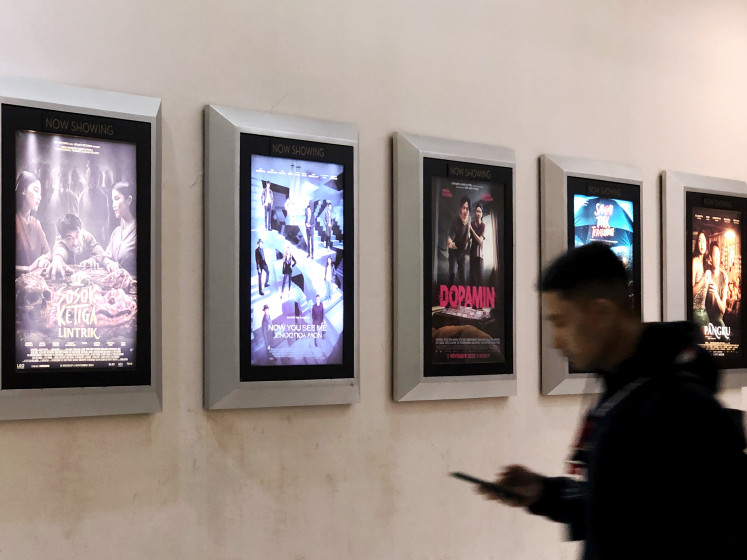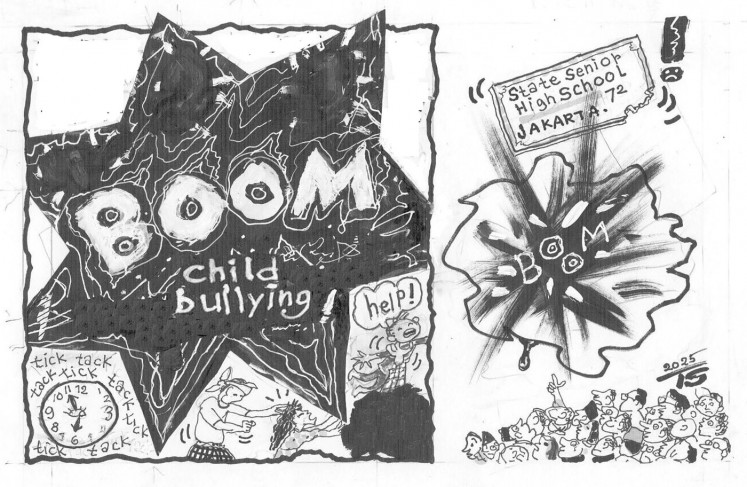Popular Reads
Top Results
Can't find what you're looking for?
View all search resultsPopular Reads
Top Results
Can't find what you're looking for?
View all search resultslove & friendship: Code Switching
SOMETIMES COMMUNICATING WITH THOSE WE LOVE NEEDS MORE THAN ONE LANGUAGE
Change text size
Gift Premium Articles
to Anyone
S
OMETIMES COMMUNICATING WITH THOSE WE LOVE NEEDS MORE THAN ONE LANGUAGE.
Code switching is what happens when a speaker alternates between two languages during a conversation.
I was born in Melbourne and raised in Australia by Indonesian parents for 8 years before we moved to Indonesia.
English remains my first language. My Indonesian is a bit stiff, but that hasn't stopped me from wanting to become more fluent.
I mean, six years ago, I was terrified to speak Indonesian. When I tried to speak in front of class, I could hear the kids in the back snicker at how I couldn't roll the 'r' and at how I would occasionally switch midsentence to English, because I couldn't remember a word in Indonesian.
I used to be made fun of for switching languages then, but nowadays people here in Jakarta constantly switch between languages ' not because they can't remember a word, but because the social context is different.
For those of us born into two cultures, code switching comes instinctively. It's not always to do with language, as changing your dialect (how we speak to parents versus how we speak to peers) is also code switching.
However, when we switch between two languages (or dialects), one may remain more dominant than the other. In these types of cases, some people may commit a mechanical switch ' switching to an alternate language for a word used to fill in an unknown term.
This is called code mixing.
People usually do this to ease communication, because you understand one language better than the other.
There are many reasons why people may code switch. Sometimes it's to convey concepts and thoughts better.
My editor tells me this is how it happens at The Jakarta Post: Meetings are in Indonesian, of course, but certain ideas are expressed in English.
This is for cultural reasons, because sometimes the concepts we learn (like sales goals or interest rates) make more sense within a certain culture or language (or dialect).
Let me give you an example of an Indian-Indonesian friend of mine: Anush, who speaks English, Hindi and Indonesian.
In situations when my friend is explaining the nature of Indian festivals to a group of us (Indians and Indonesians), he would first explain things in English (the main language we use to communicate).
Then he might code switch to Hindi (and speak to his Indian friends, to discuss how to get a traditional concept across better) and then switch back to English to explain to me.
It's similar to when people speak Javanese with their grandparents, Indonesian with their parents and a more gaul (hip) version of Indonesian at school: Different situations require different languages.
Let's take another example. Local markets have two prices: One for foreigners and another for locals. Foreigners are given the more expensive price, so this is when I code switch to Indonesian so that the vendors accept me as an Indonesian ' and I get the cheap price.
It's now very common for people in Indonesia code mix English and Indonesian intentionally. ('I mau pergi!', 'I want to go!').It's actually a bad habit, in my opinion, since people do it because they find that speaking even a little English is exciting.
However, as a Southeast Asian nation made up of over 17,500 islands, we have such a beautiful culture to uphold.
There are more than 700 local languages spoken here. It's not fun when you can't even speak the language of your own country properly.
Besides, Indonesian jokes are hilarious and would be ruined if you tried to translate them to English!










